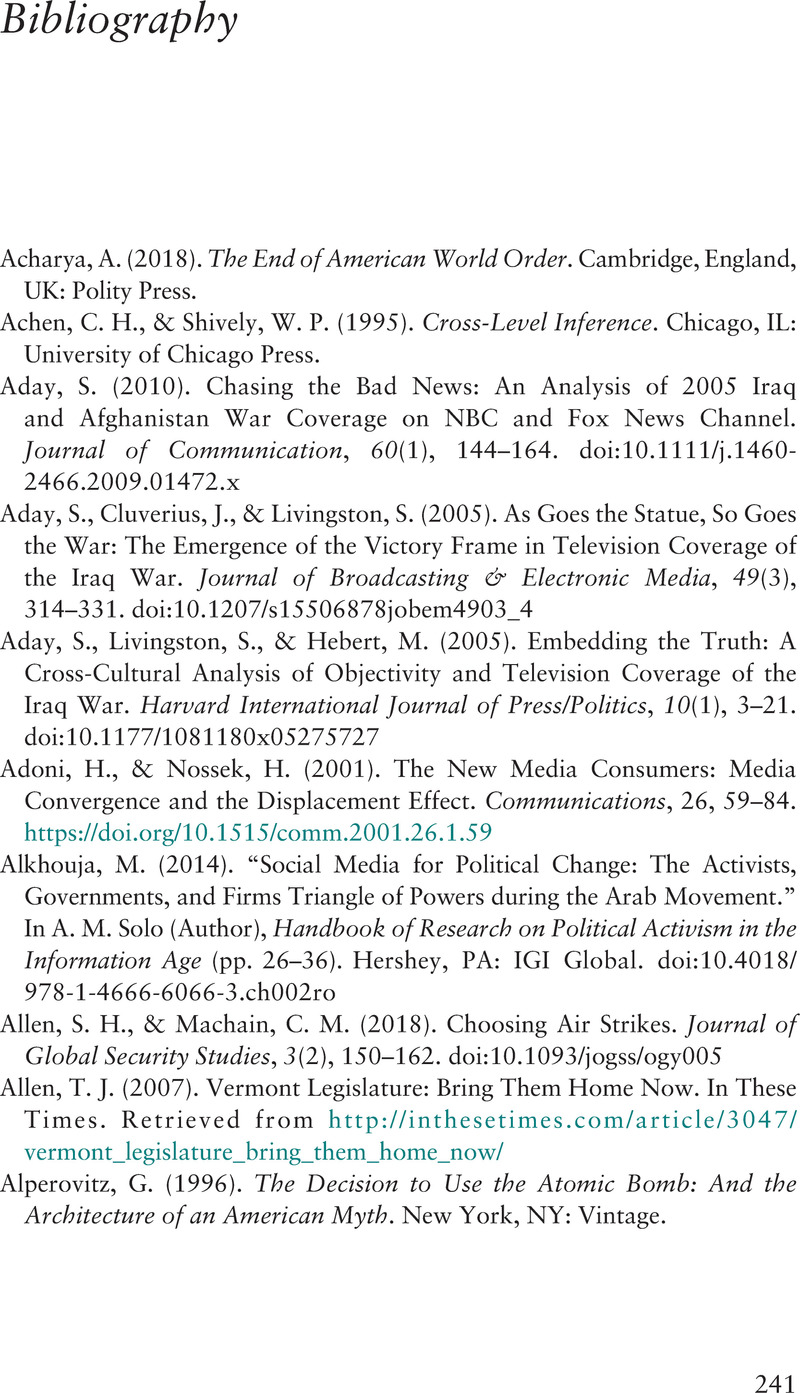Book contents
- Costly Calculations
- Costly Calculations
- Copyright page
- Dedication
- Contents
- Figures
- Tables
- Acknowledgments
- 1 Introduction
- 2 A Price Theory of War
- 3 Calculating War’s Price: What’s It Worth, and How Much Will It Cost?
- 4 The Price Theory of War in Action: Experimental Demonstrations of the Impacts of Expected Costs and Valuable War Aims
- 5 Conflict Dynamics across Space and Time: Public Opinion in the Korean and Vietnam Wars
- 6 Getting Wartime Information from Over-There to Over-Here: News Media and Social Networks
- 7 Elite Opinion Formation and Its Electoral Consequences
- 8 Conclusion: Wars, Casualties, Politics, and Policies
- Bibliography
- Index
- References
Bibliography
Published online by Cambridge University Press: 18 June 2021
- Costly Calculations
- Costly Calculations
- Copyright page
- Dedication
- Contents
- Figures
- Tables
- Acknowledgments
- 1 Introduction
- 2 A Price Theory of War
- 3 Calculating War’s Price: What’s It Worth, and How Much Will It Cost?
- 4 The Price Theory of War in Action: Experimental Demonstrations of the Impacts of Expected Costs and Valuable War Aims
- 5 Conflict Dynamics across Space and Time: Public Opinion in the Korean and Vietnam Wars
- 6 Getting Wartime Information from Over-There to Over-Here: News Media and Social Networks
- 7 Elite Opinion Formation and Its Electoral Consequences
- 8 Conclusion: Wars, Casualties, Politics, and Policies
- Bibliography
- Index
- References
Summary

- Type
- Chapter
- Information
- Costly CalculationsA Theory of War, Casualties, and Politics, pp. 241 - 268Publisher: Cambridge University PressPrint publication year: 2021

